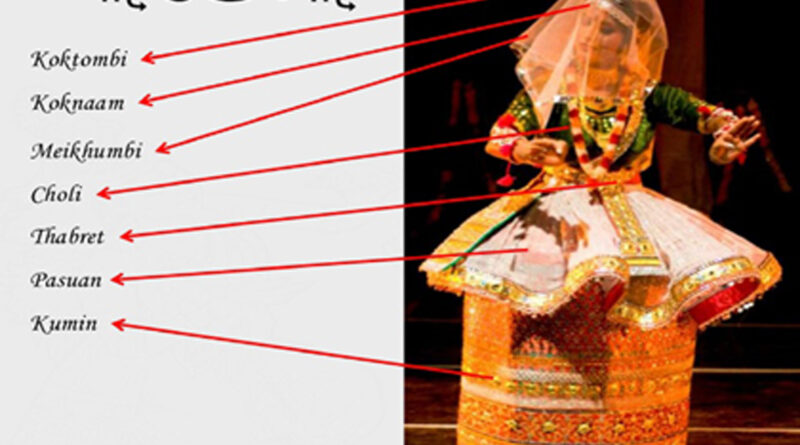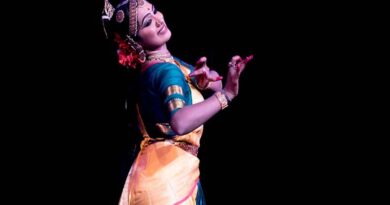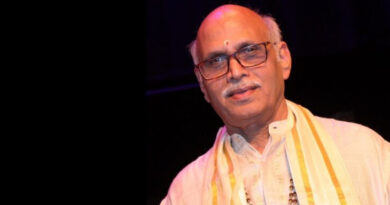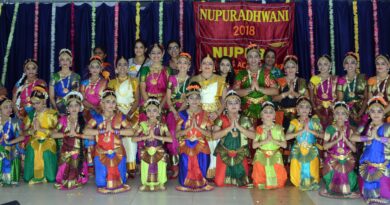Article : MANIPURI
Dr.(Smt.) Kanak Rele
Padmabhushan, Akademi Ratna (Fellow of Sangeet Natak Akademi)
Director, Nalanda Dance Research Centre
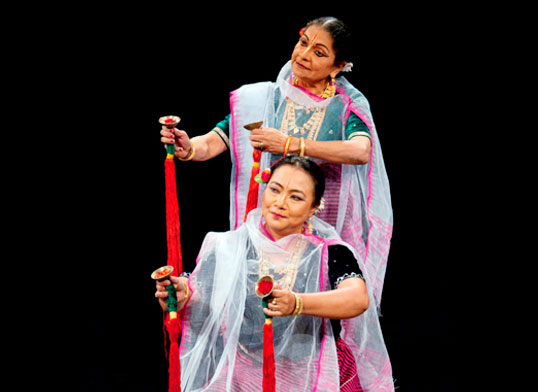
Manipuri is from the north-eastern state of Manipur. Manipur literally means “the city of jewels”. It is indeed a jewel surrounded by beautiful hills and verdant fields, this lovely state has given forth one of the jewels of Indian culture and that is Manipuri dancing.
Dancing is a way of life for the people of Manipur. The people are deeply religious but no worship, no puja is possible unless it is accompanied by song and dance. As such every inhabitant knows how to dance and sing and many of them also play various instruments. The present Manipuri repertoire or the form was created sometime in the end of 17th century and beginning of l8th in the reign of Maharaja Shri Bhagyachandra.
The current dance style, the classical part of it has two major streams. One is the sankirtana which is the devotional aspect and the other is raasa. The people who are by and large Vaishnavites in their faith have deep religious fervor towards Krishna and as such the different raasas that Lord Krishna is supposed to have performed with the gopis of Gokul on the banks of river Yamuna predominate in the presentation. The gorgeous colorful costumes enhance the aesthetic beauty of the dance style which has both tandavaand lasya very well defined. The tandava aspect is presented in various drum dances pung-cholom and dances with cymbals in the hands Karatalacholom. The lasya aspect is presented by the ethereally beautiful and delicate movements representing the gopis and Radha. This is Manipuri.
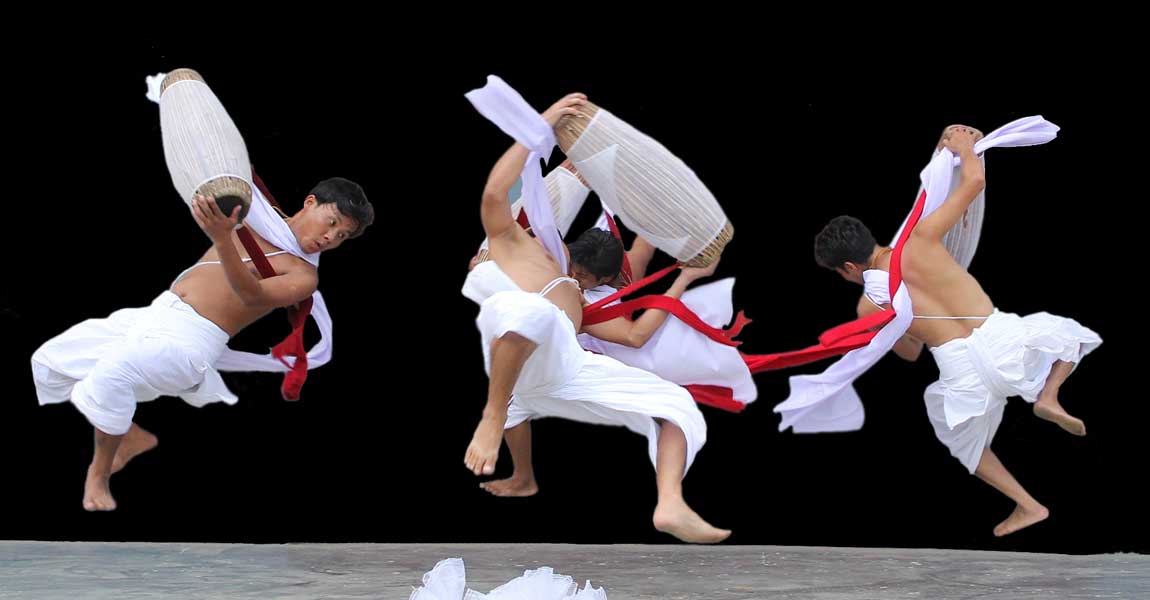
The early pre-Hindu dances of Manipur were of an animistic nature; later came the dance performances offered as worship to Lord Shiva and Goddess Parvati in their native avataras and then came vaishnavism which put in deep roots and is the chief religion of the state.
At present there are two sects in Manipur – the Meiteis and the Vishnupriyas. The pre-Hindu culture of Manipur is that of the Meiteis.

A favorite legend, which is part history also, is of Khamba and Toibi who are the principal male and female characters of the great Manipuri epic Moirang Parba. It tells the story of their great love for each other, the great privation and opposition that they had to face from the society, their eventual short-lived marriage which ended in the death of both of them.
Apart from their great love story, they are remembered as great dancers, that they were regarded as avataras of Shivaand Parvati. The favorite dance was known as Lai Haraoba (Festivity of Gods), which is one of the main facets of today’s Manipuri.
In the 18th century the king Pamheiba ascended the throne. He came under the influence of Vaishnavism and thus, changed the entire nature of the social ethos of Manipur. He ordered all his subjects also to embrace Vaishnavism and, in a religious fervor, destroyed all the records of the earlier religion and its culture. He also forbade the worship of Meitei and the use of the Meitei language itself.
After him came the main architect of what we know as Manipuri-Maharaja Bhagyachandra, who was a great devotee of Shri Krishna. In his reign, the influence of Bengali took deep roots in Manipur.
It is Bhagyachandra who created the Raasa dance under divine inspiration.
The present Manipuri repertoire has three major streams.
- Sankeertana which is deeply religious and ritualistic in nature.
- Raasas performed by Krishna and gopis.
- Lai Haroaba which is the oldest traditional stylized dance.
There are three types of Raasas – KunjaRaasa, VasantaRaasa and MahaRaasa.
KunjaRaasa describes the meeting of Radha and Krishna with the help of the sakhis in a kunja or arbor.
Vasanta Raasa describes the divine play of raasa by Krishna and the gopis and the resultant jealously of Radha and their eventual reconciliation. This dance is usually performed at the time of spring and ends with movements representing throwing and splattering of color by Krishna and Radha which is reminiscent of the Holi festival.
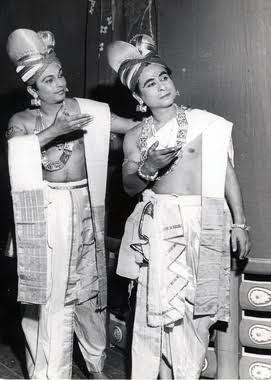
Maha Raasa captures the spirit of the divine raasa danced in a circle by Krishna and the gopis.
All the raasas are performed on special full moon (Purnima) nights. They are very lyrical and have very graceful and liquid movements, done to soft and light stepping which creates an ethereal atmosphere.
In Manipuri, not only the hands and the face but the entire body is used to communicate ideas and meanings, thus one can say that it is nritya that predominates.In light the hole of the raasa technique though full of nritya patterns becomes, in effect, nritya .This use of the entire body to emote has, very naturally, lessened the emphasis on the mukhajaabhinaya which in comparison to the other dance styles looks very tame and insignificant.
One must understand the completely philosophical and spiritual meaning of this underplay of emotions where, the abhinaya is raised to such great spiritual heights, that it ceases to be a mundane presentation of worldly moods and becomes exalted transcendental affair, where not so much the body but the soul is to be taken as the supreme vehicle. Raasa thus, has an ultimate religious and devotional fervor. The basic dance sequences, five in number are very intricate to dance which are called the bhangipareng.
The Sankeertana is presented by the two types of choloms the Pung Cholom and the Kartal Cholom .
Manipuri is characterized by its fluid movements where each movement appears to flow into the next one. It also has extremely graceful movements of the wrists and palms. Though having a wide variety of tala patterns; unlike other Classical dances, Manipuri does not employ heavy and harsh pounding of the feet.
The footwork is executed predominantly on toes lending the dance its renowned ethereal quality. The female dancers appear as if they are almost gliding in the air. Drum dances form an integral part of this dance style. Almost every dancer knows how to play on the pung and most, male dancers perform the pungcholom.
Pungcholom literally means the drum dance where the dancer dances with the pung, which is a Manipuri Percussion instrument. It is perhaps the most beautiful Manifestations of the abstract concept of tala being presented in a concrete form. The dancer dances and accompanies himself with the drum.

